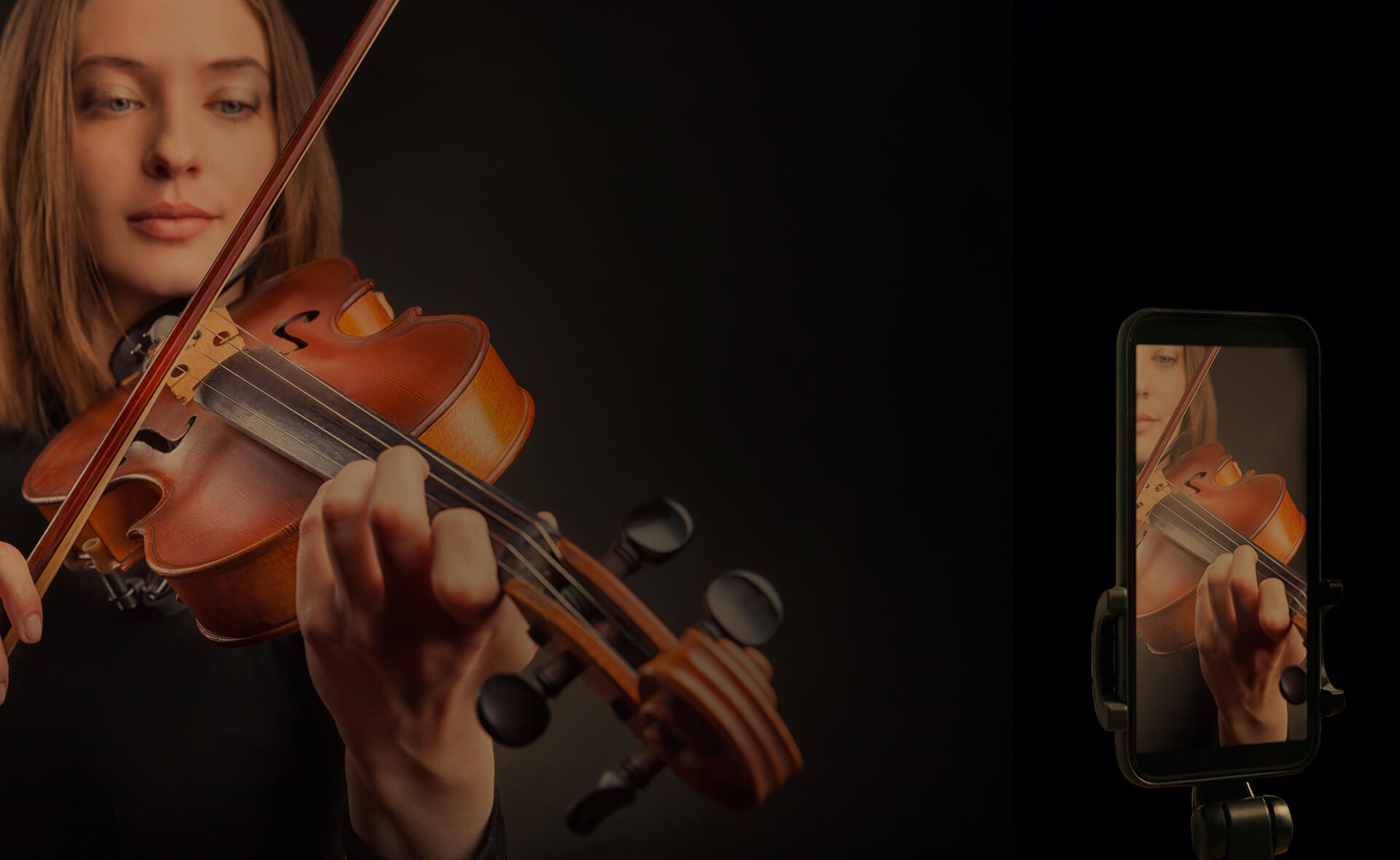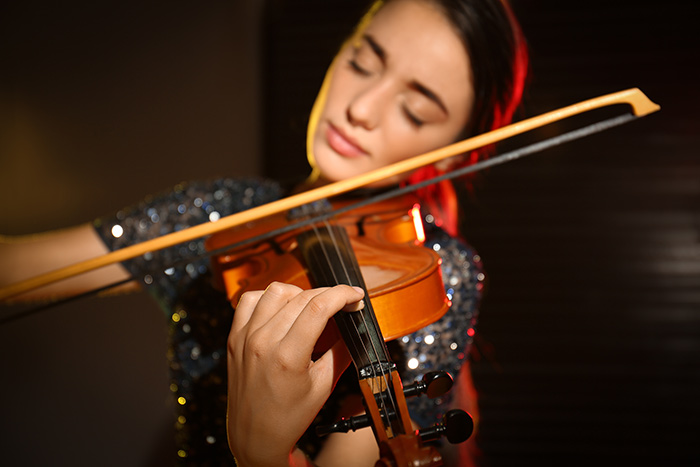The violin is known to be one of the most difficult instruments to study and play at a satisfactory level. I remember when as a young student after school concerts some family member or a friend who doesn’t play any string instrument would ask me “How can you play violin without frets? How do you know where to find each note?” If only they knew that this is only a prelude to more complex business.
Importance of General Musicianship in Playing Violin
The amount of work and time needed may feel overwhelming at first. The beginner violin student must learn a set of completely new skills at the same time; starting with learning music notation and developing fluency in reading notes, becoming musically informed in terms of harmony and music history, improving the ear and aural skills, awakening overall musicality and musical sensitivity as well as working on the physical aspect of playing the violin where many challenges may need to be faced.. Everything has to be practiced separately, and at the end those skills should be connected together in a performance where some aspects are supporting others. Usually, a lot of this learning happens naturally and unconsciously, although It is common for young students to underestimate the importance of general musicianship and overlook the bigger picture.

I must admit that as a highschool student I wasn’t aware of the benefits of systematically training other musical skills. I was struggling to motivate myself and understand why I should invest time in practising singing solfege or a-tonal exercises with complicated rhythm. At that time I was questioning the point of studying music theory because in a violin exam or audition the panel will see only the physicality of playing an instrument. My mark will depend only on my intonation, rhythm or ability to memorise the music and the time spent on working on other musical aspects will not be appreciated.
Looking back to the lack of frets on violin, how does a violinist know where to place their finger in order to pitch a particular note. That is where those hours of singing solfege and challenging the part of our brain responsible for ear training and the sense of rhythm will pay off. It is impossible to play on a string instrument without a sensitive ear, because it is the ear which guides and corrects the fingers, so unless this guidance is present the fingers will have very little chance to learn. This ultimately can lead to a situation in which the ears and hands are so much in harmony with each other that they no longer feel separate. We play with our ear not fingers, at least at the beginning of learning some repertoire. We can see from this that not only is the development of a sensitive ear primary; it also saves a lot of wasted effort in practising.

Physical Demands
Violinists have to deal with an unusual body position. Finding comfort and familiarising oneself with the shapes and flexibility needed may be challenging at first. Dealing with the unusual hand position, as well as very different demands on left and right arms may cause unnecessary tension and can be overwhelming. Some people may have the idea that playing the violin is inherently uncomfortable, but the discomfort doesn’t come from the instrument itself, but from the wrong way of supporting it. Probably, too much effort is being made or the hands are not being allowed to remain flexible and sensitive. It is important in your violin lessons to find a way to support the instrument that does not induce stress. Violin playing can and should be effortless and enjoyable.
The Art of Tuning
Tuning the violin isn’t as easy as it may seem. In order to play in tune, it is crucial to play on a well tuned violin. I must admit that I can’t remember how I learnt that skill. I was lucky to have my father’s great support at the beginning of my journey with the violin to help me tune my violin every day. There is a story which highlights the power of the ability of tuning the violin which emphasised the virtuosity and complexity of that simple activity.

In the document about a great violin teacher Ilona Feher there is an interview with her student Pinchas Zukerman telling the story of the very first lesson and how he convinced this amazing teacher to take him to her already full violin class. One of the most successful violinists persuaded Ilona to give him a chance to study with her by demonstrating his ability to tune the violin himself after 4 months of learning the violin. Later Zukerman explained that his father firstly taught him how to tune the violin because of his rare gift of a perfect pitch, that skill wasn’t as challenging for him as it usually is for most beginners.
Tuning the instrument is a complex activity. Despite the fact that every violin student does it a couple couple times during the day, it is still ignored by so many. I remember my first string orchestra rehearsal at Trinity Laban, where like always at the beginning of rehearsal the leader gives to the rest of the orchestra an A by playing an open string, for the other players to perfectly match their own A string and later tune the rest of the violin to have exactly the same sound in the whole orchestra of each string, D, G and E.
Suddenly, the conductor decided to start picking on the players to play their own A or other strings. He also asked me. I remember my shock when in comparison to my friend’s D string mine was slightly different. I was 20 years old, which would mean I have been playing the violin for 14 years, having learnt complex techniques and repertoire and have tuned my violin countless times. Still I wasn’t able to tune my own instrument correctly.

Demanding repertoire and the role of the violin in classical compositions
After pianists, violinists have the widest range of repertoire. Over the years composers have challenged this instrument in various ways from writing demanding melodies to creating new complex techniques. Some violin repertoire is difficult and virtuosic starting with solo concertos as well as in chamber and orchestral parts. String players are playing almost all the time during symphonies, whereas the brass section usually joins strings for a short time.
For example, there is no trombone in the first four Beethoven Symphonies and in the 5th, the trombone section enters only in the last movement to highlight the victorious character. I would like to show a huge respect and appreciation to brass parts, they are usually soloists and if they miscount an entry and forget to play or make some terrible mistake no one will save them and play their solo. At the same time I would like to emphasise the challenge of playing as a group and finding the same sound as a string section.

Again, all of those hours we previously spent learning music history, harmony and listening to classical music will save our time in preparation for orchestral rehearsal and support the performance. Usually, a well educated and experienced musician can predict the next couple of bars from a particular genre or style due to harmony classes where music students are learning and analysing how each composer writes. Music is full of patterns, after practising singing Bach Chorales musician understands his language and it supports performing Bach’s compositions.
It isn’t possible to play well on any instrument without well grounded basics in music theory, general musicianship as well as well based aural training. This is equally true in the jazz world, where fine players have astonishing musicianship and aural skills.

Mind and Body Dualism
Elizabeth Behnke has been interested in how we could integrate as one the whole system, the body and the mind without the separation as well as how to tune ourselves to incorporate the natural movement of the whole organism without intellectualising it with the mind. She stated that the body is the source of the movement rather than an object manipulated by the mind. Elizabeth established the term ‘swing body’ which means that the body dances freely and flexibly like in swing music.
John Crawford had discussed the idea of body schema in relationship to the bow hold in his recent article for The Strad. The idea of body schema is relevant and appropriate for string players. Since we often through education develop the conception that the bow is a thing and the student needs to learn how to control it. For instance, the violinists have to dictate the arm to move to bow in order to make the music. The whole event becomes separated into little stages and micromanaged. The bow hold and playing on the violin should be considered and integrated into one big movement. The division between our body, instrument and the music is not the most beneficial for our development as a performer.
Learning the violin without the frets is possible only when the player has well grounded basic musical knowledge and is able to trust its own natural movements. Remember to enjoy your musical journey.








